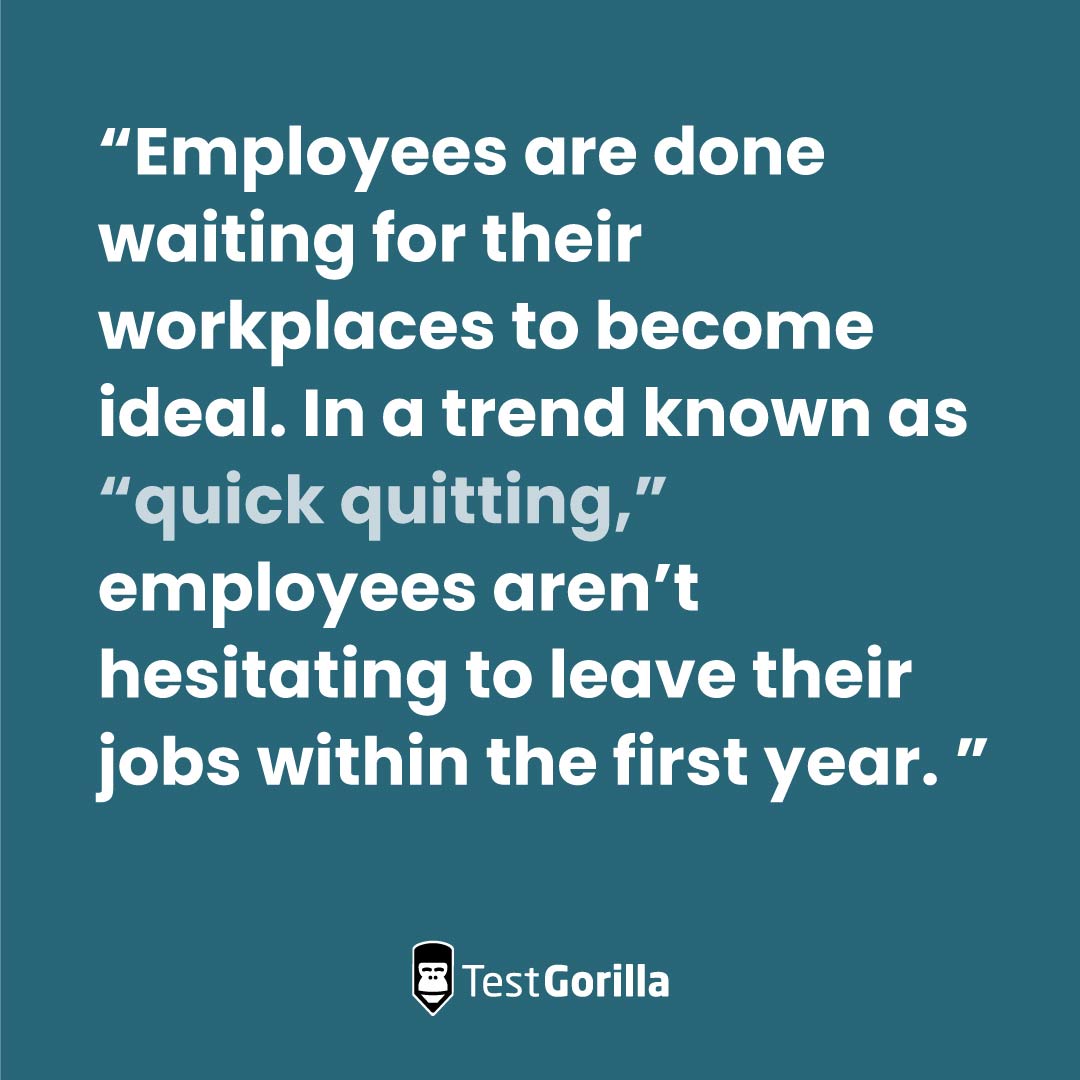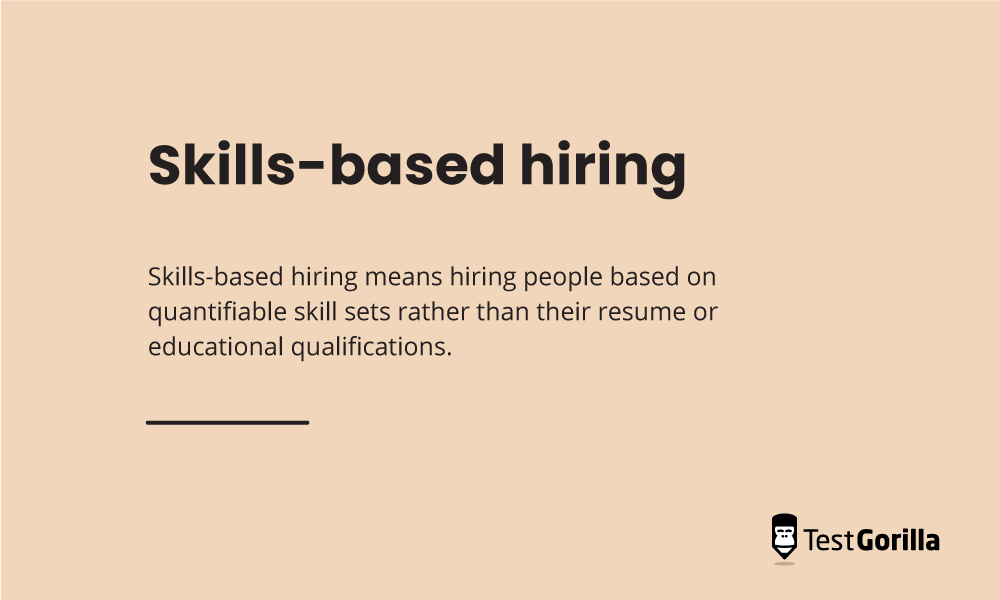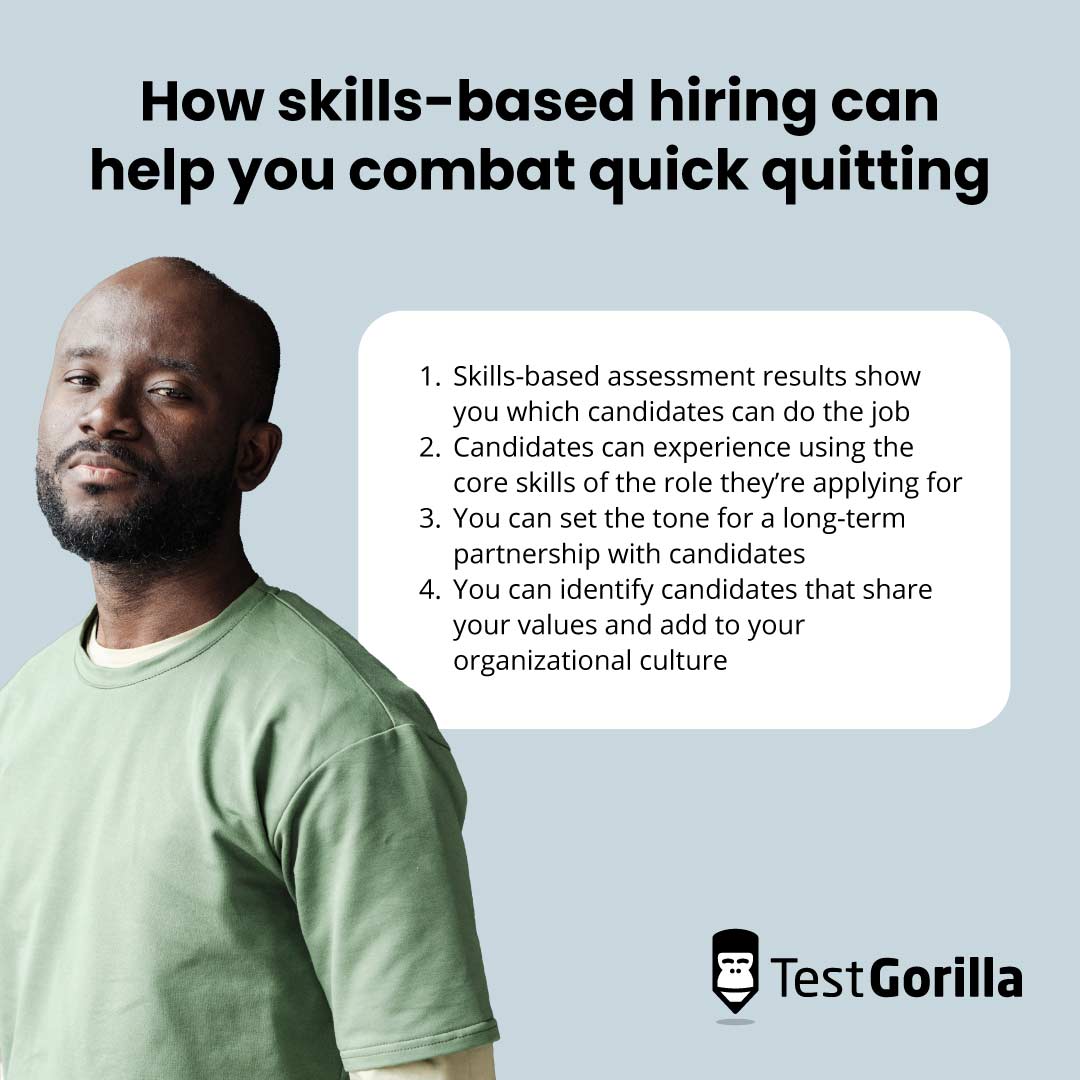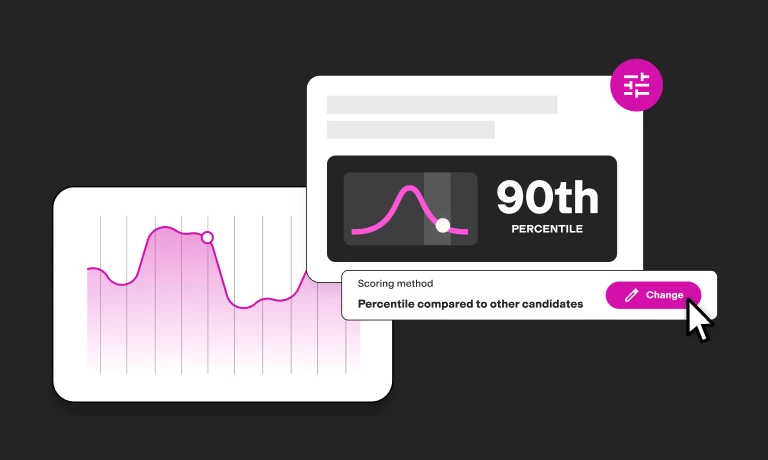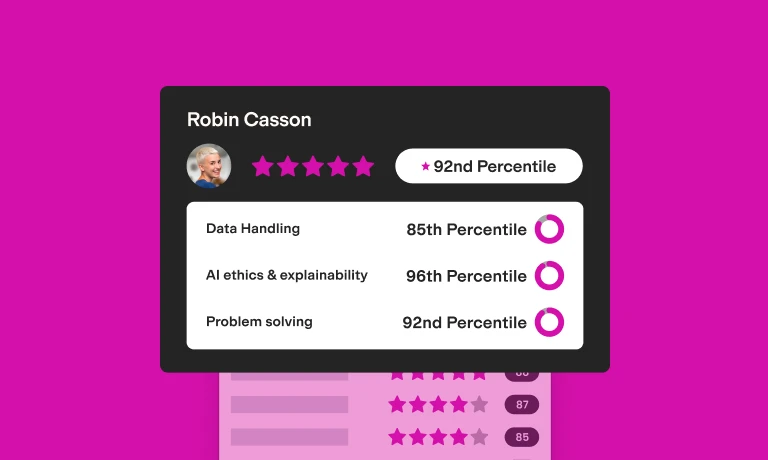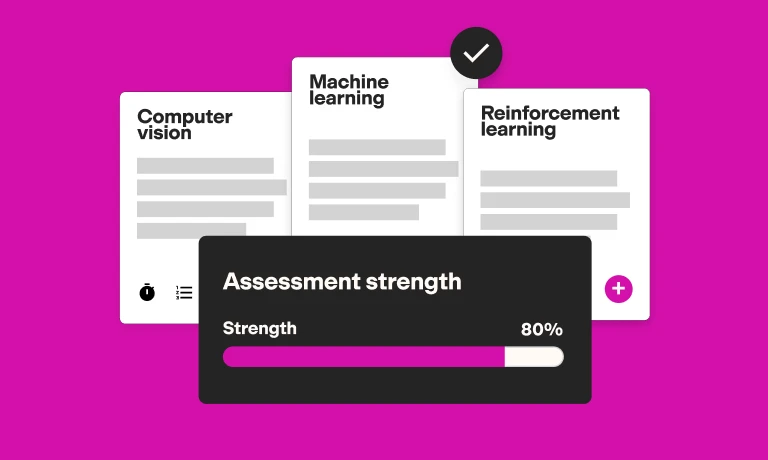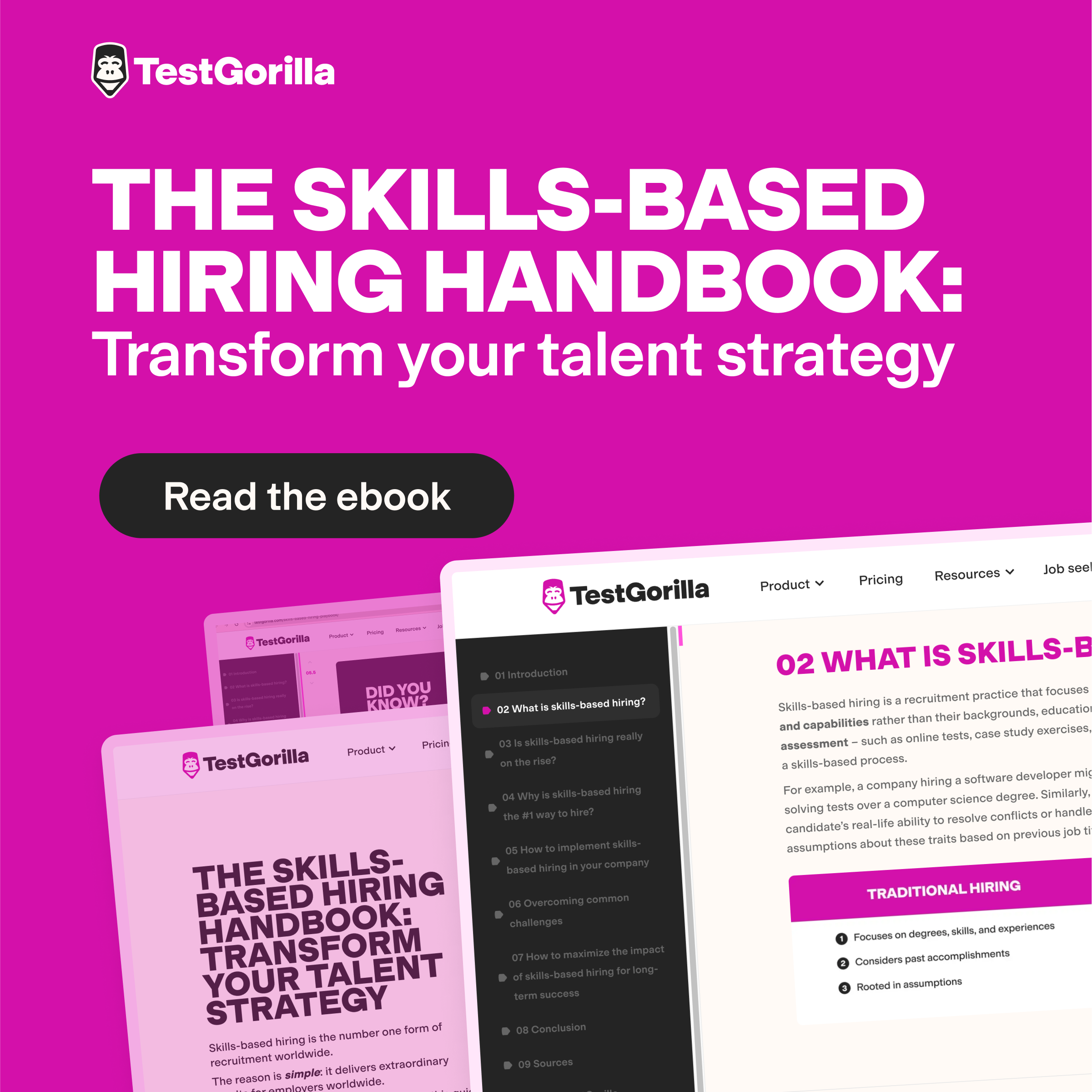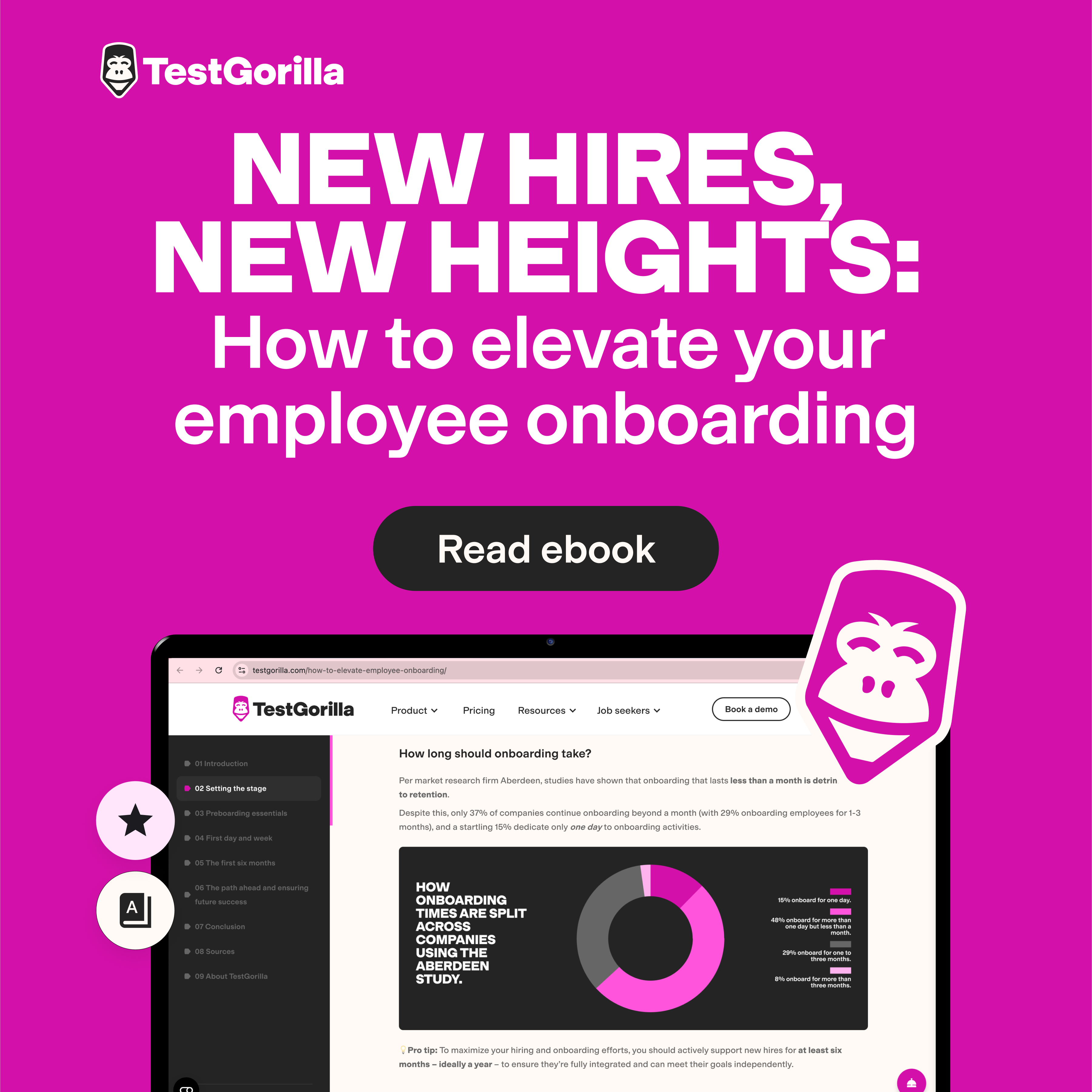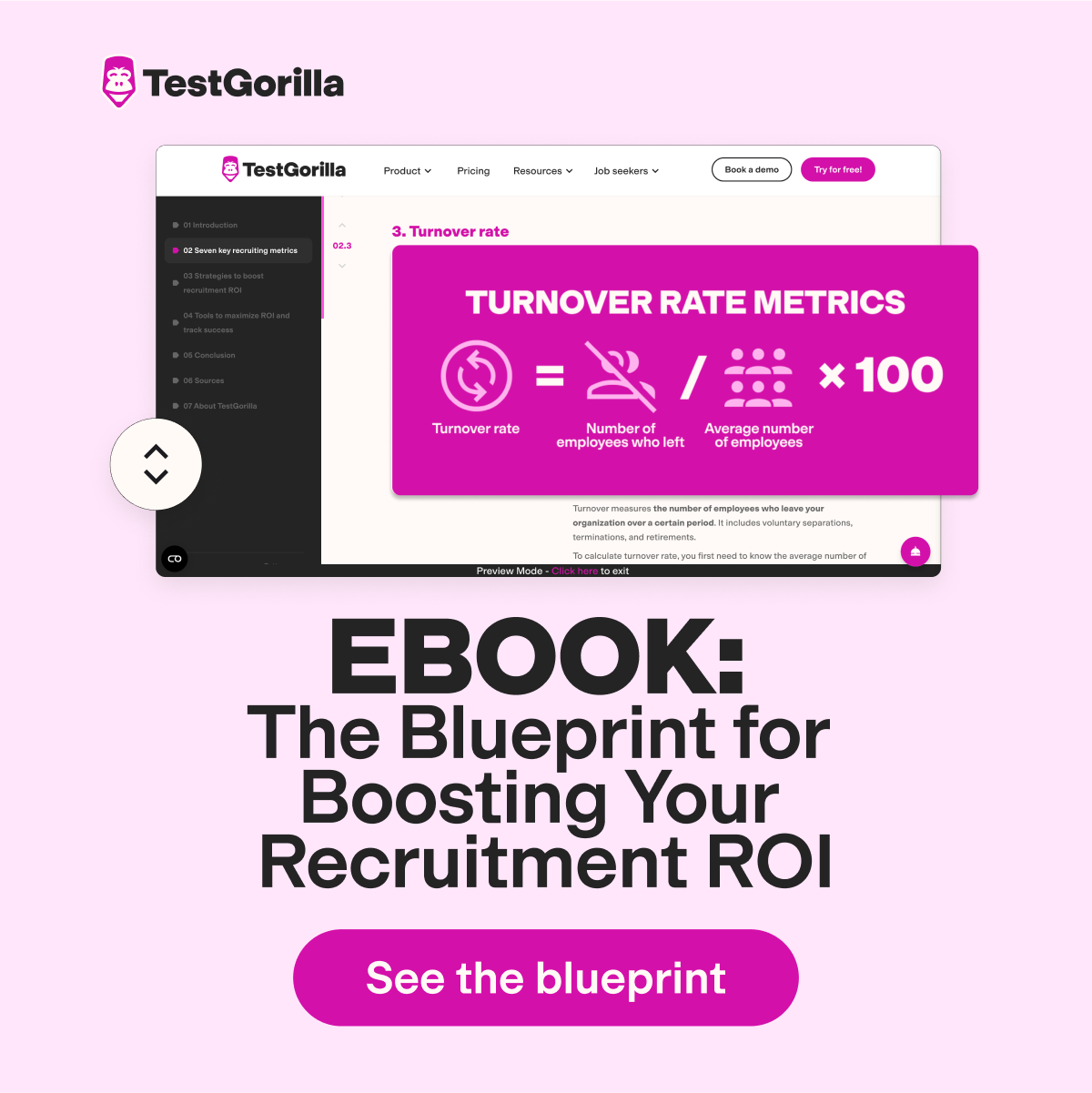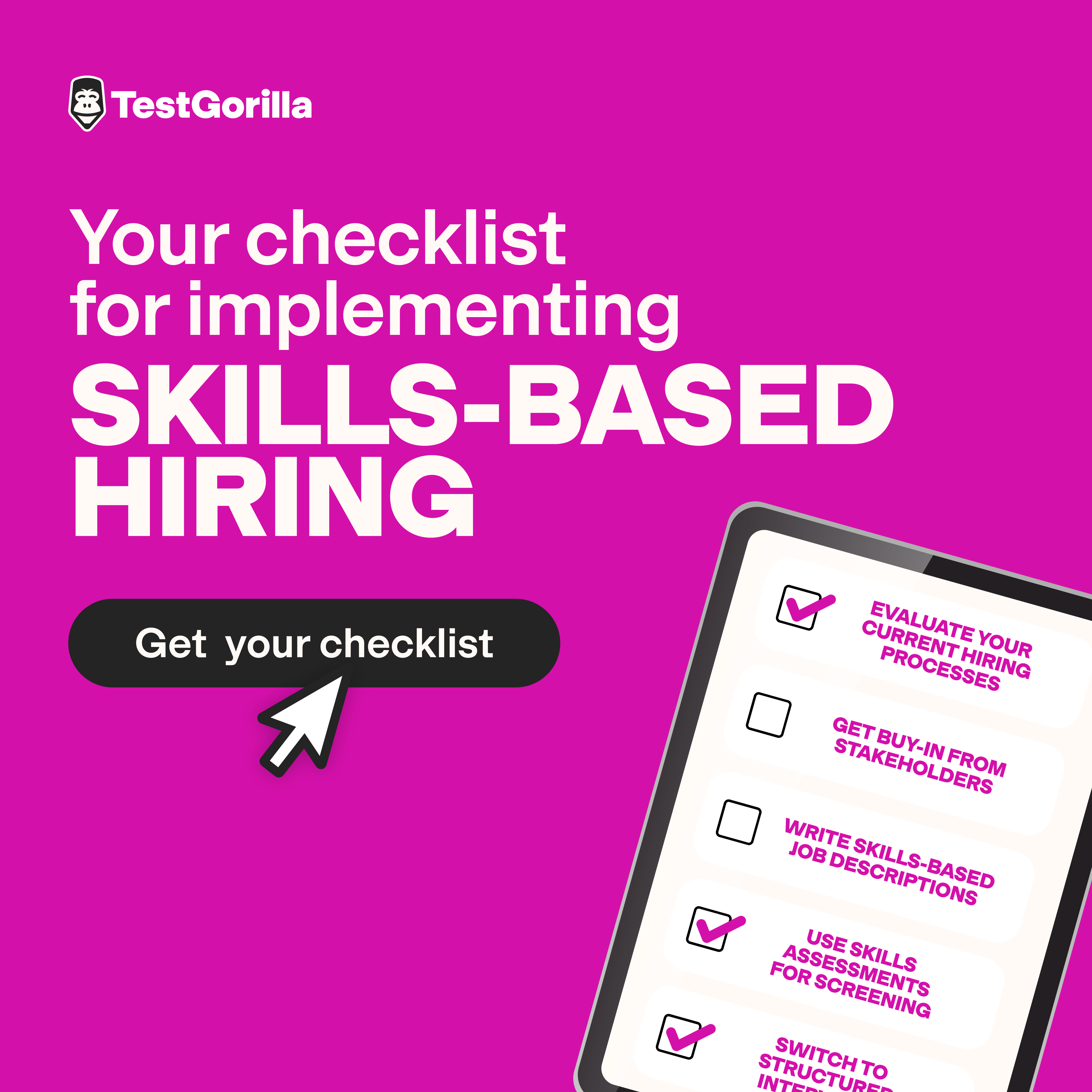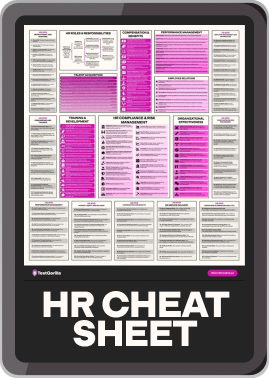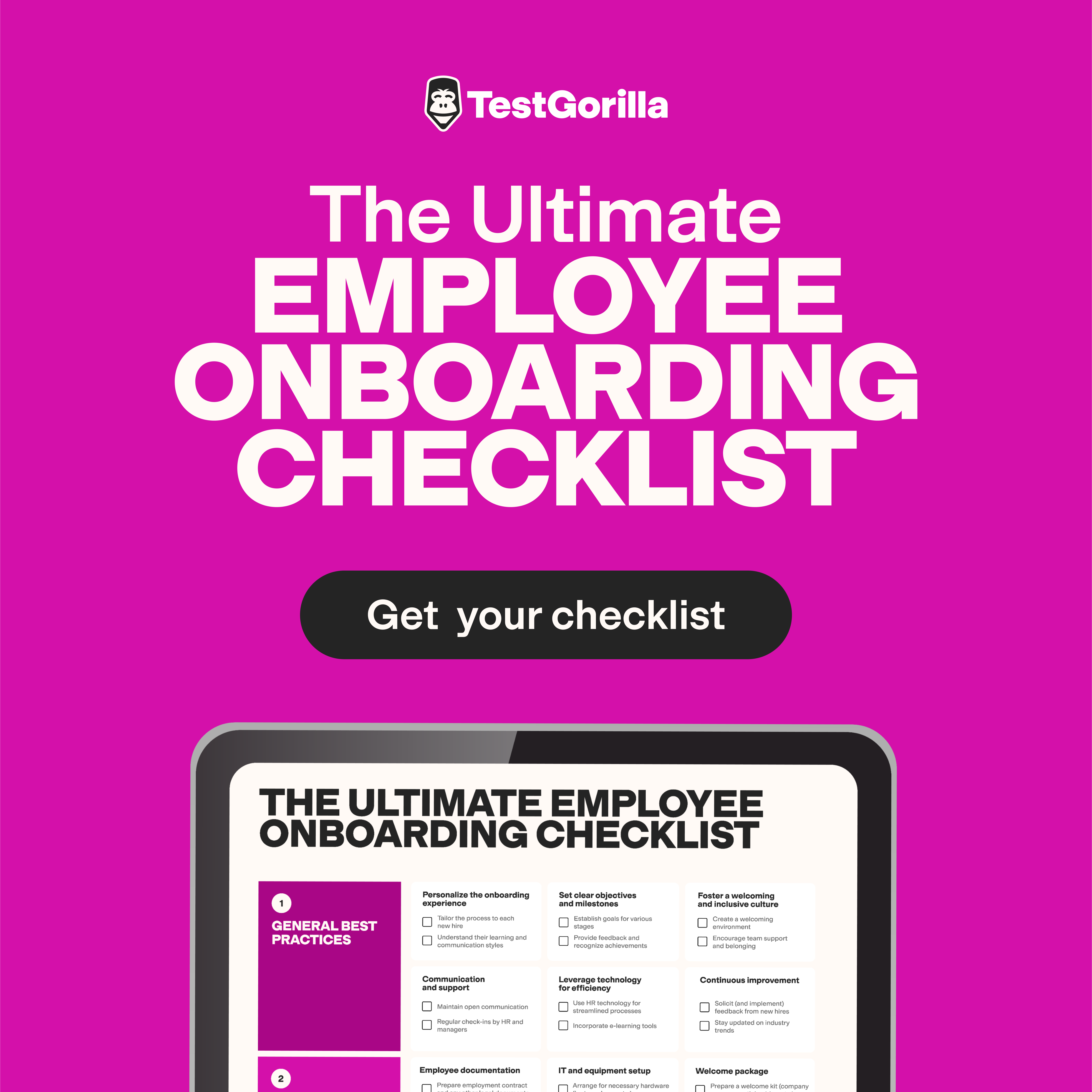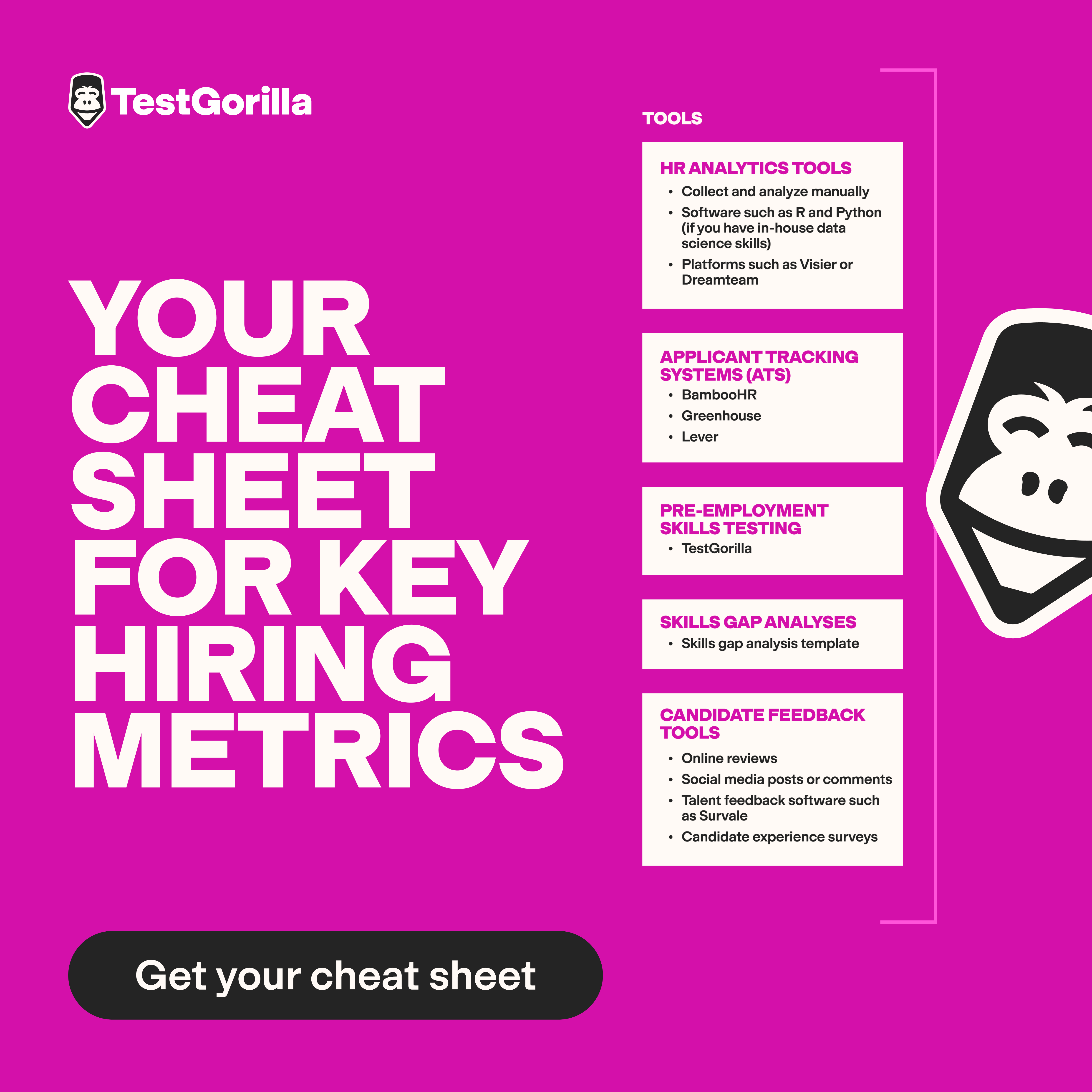4 ways skills-based hiring combats the quick quitting trend
Employees are done waiting for their workplaces to become ideal. In a trend known as “quick quitting,” employees aren’t hesitating to leave their jobs within the first year.
The reasons for this short tenure rate (STR) are varied, but they include employee burnout, toxic workplaces, poor skills matches, and lack of career growth. In addition, Gen Z, who represent an increasing part of the workforce, are driving workplace trends. This younger generation doesn’t stigmatize job-hopping like earlier generations, which further impacts job tenures.
For employers, this means spending even more time and money on recruiting, onboarding and training, and hoping new hires don’t leave by the end of the year.
Hope isn’t much of an employee retention strategy. But skills-based hiring is.
Read on to find out 4 ways skills-based hiring can help you combat the quick-quitting trend.
What is skills-based hiring?
Skills-based hiring literally means hiring people based on quantifiable skill sets rather than their resume or educational qualifications. This strategy sets you up for success and levels the playingfield for candidates from the screening stage. You can have candidates complete online assessments or take-home projects that let their skills speak for them, removing bias and increasing diversity.
In our State of Skills-Based Hiring Report 2022 survey, 70.2% of respondents agree that skills-based hiring gives them a better chance to secure their “dream job,” and a majority of employees hired through skills-based hiring are happy in their role.
Now let’s dive into how it can help you combat quick quitting specifically.
1. Skills-based assessment results show you which candidates can do the job
Most people get anxious when they start a new job because they want to fit in and be successful in their roles. Skills-based hiring makes it more likely that a new employee feels a sense of belonging and has confidence that they’re well-suited to the role.
As Abby Jordan, Director at Crone Corkill, points out, “If they already know how to complete certain elements of the job, they’re more likely to bring immediate value to the role and be recognized for that. Lack of recognition is one of the most common reasons for quitting a role.”
When you hire employees for demonstrated skills rather than resumes or connections, you find the right people for the right roles. Whether a role requires technical skills or soft skills, or a combination of both, a skills-based assessment helps you narrow down your search in an objective, quantifiable manner.
Abby recommends using “clearly-defined skills from the outset that match the job” but also cautions against a one-size-fits-all approach. “Be specific about the systems to be used, the tasks to be completed, and the experience that can be evidenced by output.”
For example, a sales manager role would require account management, strategic and analytical skills. But, a sales manager also needs people skills. In other words, leadership, communication, and empathy are vital to being a successful manager. And so, your assessment needs to be more holistic and test not just skills but also personality, culture, and cognitive abilities.
When a new hire can immediately fulfill the demands of a role, it leads to high productivity and a stellar employee experience, improving retention in the long run and preventing quick quitting.
2. Candidates can experience using the core skills of the role they’re applying for
Skills-based hiring brings the core responsibilities of a role front and center for employers and candidates. Nicholas Blum, Senior Assessment Development Specialist at TestGorilla, says, “Asking candidates to showcase their skills as part of the recruitment process provides an opportunity for them to experience using those skills as well.”
Nicholas cites an example of a role that requires budgeting skills. In this case, candidates who take a skills test will experience firsthand that the day-to-day responsibilities of the role will involve budgeting. The skills test acts as a realistic job preview.
If a candidate feels overwhelmed or insufficiently trained in this area during the skills test, they can withdraw from the hiring process. Both you and the candidate avoid wasted time and effort.
If you’re just matching skills from a job description with those listed on a candidate’s resume, you could end up hiring someone that has base-level expertise rather than a candidate who truly excels at the core skills that are central to the job.
When you test and choose a candidate based on the skills they have and offer them a realistic job preview, they’re more likely to succeed and stay at the company, protecting you from an instance of quick quitting.
3. You can set the tone for a long-term partnership with candidates
Skills-based hiring is a way to demonstrate your company’s commitment to hiring, compensating, and developing employees who have the skills you’re looking for. Sara Joler, Localization Project Manager at TestGorilla, says that skills-based hiring helps you “hire a person that will contribute to the overall growth of the company.”
Candidates want to see opportunities for professional growth, and skills-based hiring shows that an employer values the skills an employee brings to the company. As Sara points out, skills-based hiring helps employers focus on “specific skills and expertise rather than simply filling up a position that can be easily performed by anyone that is willing to work the hours.”
When you place a premium on skills, it shows employees they have a future at the company and they will likely be able to develop other skills on the job. For employers, this translates into productive and engaged employees who contribute to business goals.
When employees see that their company is invested in hiring for the right skills and in helping them gain new skills, it keeps them motivated to stay longer. Take that, quick quitting.
4. You can identify candidates that share your values and add to your organizational culture
New employees contribute to the culture you’re building, which means you need to make sure they are aligned on values, behaviors, and working styles. Otherwise, they might be a detriment to the culture you want to build, or quick quit. Whether you’re a startup or an enterprise, a strong organizational culture gives you a competitive advantage and is key to retaining your best employees.
With resumes, it’s hard to know whether a candidate will mesh with the rest of the team. After all, a resume is just one document and, as Victoria Denstedt, Designer at TestGorilla, points out, “candidates may tailor up or down their resume” to fit a job description. “It’s much harder to be discreet when taking skills-based tests,” she says. There’s no way of knowing whether candidates actually share your values, or are just saying they do because they want the job.
With skills-based hiring, you can incorporate personality and culture tests as well as tests for technical and role-specific skills. The results help you understand what motivates a candidate and whether their aspirations align with the values and needs of your organization.
A great example of this is our culture add test, which assesses how a candidate’s behaviors and values align with those of your organization based on a survey you fill out. The added benefit of hiring for culture add over culture fit is that you can identify people who share your values without inadvertently creating a homogenous workforce (“shared values” does not mean they have the same educational background or social interests as you).
Values and culture are important to employees, and especially GenZ workers, so hiring candidates who share your values is an effective way to ensure they won’t quick quit.
Skills-based hiring is your tool to mitigate quick quitting
Skills-based hiring doesn’t just help you choose the best candidates, it also helps you engage and retain them.
Simply put, when candidates have the exact skills you need for a role and they share your company values, it’s highly likely that they’ll be engaged and productive.
All this is to say that, by hiring candidates with skills-based hiring, you can significantly reduce the chances that they’ll quickly quit their jobs within year one.
Ready to leave quick quitting behind? Sign up for a free demo with TestGorilla.
The best insights on HR and recruitment, delivered to your inbox.
Biweekly updates. No spam. Unsubscribe any time.
Related posts
You've scrolled this far
Why not try TestGorilla for free, and see what happens when you put skills first.


